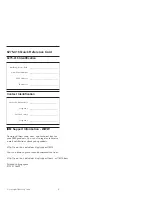
C141-E039-01EN
3 - 115
(2)
Parameter Specification
When “0” is specified in the “SelfTest (self test) bit in the CDB, the IDD executes the
operations specified in the parameter list transferred from the INIT by this command. In this
case, the IDD reports a GOOD status and terminates this command at the point when
preparation of the “response data” is completed after completing the specified operations. The
INIT can read the execution results (response data) by the RECEIVE DIAGNOSTIC
RESULTS command.
When the “PF (page format)” bit in the CDB is “1,” the parameter list transferred from the
INIT by this command shows the page format, explained later, but the IDD disregards the
value specified in this bit and always handles the page format according to the specifications
in the parameter list when the parameter list is transferred by this command. Also, when the
“SelfTest (self test)” bit is “0,” the specifications in the “DefOfl (device off-line)” bit and the
“UnitOfl (unit off-line)” bit have no meaning and their specified values are disregarded.
The “Parameter list length” field in the CDB shows the length (number of bytes) of the
parameter list that is transferred from the INIT when the “SelfTest (self test)” bit’s
specification is “0.” When zero is specified in the “Parameter list length” field, this command
is terminated without anything being executed. Also, when the value specified in the
“Parameter list length” field does not reach the specified length for the parameter list,
explained later, and as a result, not all the bytes in the parameter list can be received, that
command is terminated with a CHECK CONDITION status (ILLEGAL REQUEST) [=5] /
Invalid field in CDB [=24-00]).
Fig. 3.35 shows the format of the parameter list (called the parameter page) transferred from
the INIT to the IDD by this command. The parameter page is configured from the 4-byte
“Page Header” and the “Page Parameters” which follow it. Furthermore, the INIT can specify
only a single parameter page by this command. Even when multiple parameter pages have
been specified by the INIT, the IDD executes only the operation specified by the top parameter
page.
Notes
1.
When “0” is specified in the “SelfTest (self test)” bit in this command, the INIT can
specify only a single parameter page.
2.
In order to avoid loss of security to the execution results (response data) of this
command due to another command issued by another INIT, when “0” is specified in
the “SelfTest (self test)” bit, the INIT should issue this command linked to the
RECEIVE DIAGNOSTIC RESULTS command or reserve the IDD before issuing this
command, and should release the reserve status after executing the RECEIVE
DIAGNOSTIC RESULTS command.
3.
When a command other than the RECEIVE DIAGNOSTIC RESULTS command is
linked to this command, the execution results (response data) may no longer be
secure.
















































